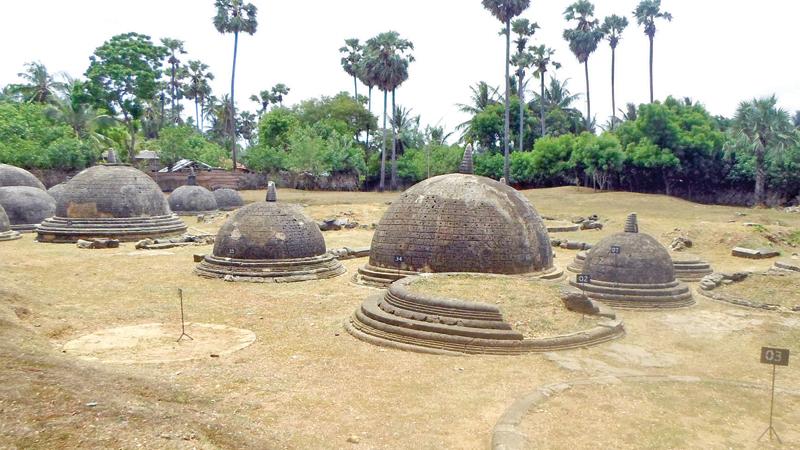
The Kadurugoda temple in the Kandarodai village in Chunnakam, Jaffna is considered one of the Buddhist remains in existence today in the Jaffna peninsula.
This historical temple with a large number of ‘stupas’ has become a popular tourist destination.
According to the Mahawansa, the history of the Kadurugoda temple goes back to the Anuradhapura era.
During the period of King Devanampiyatissa, Theri Sangamitta had arrived at Dambakolapatuna with a sapling of the Sri Maha Bodhi. It is said that the road to Anuradhapura from Dambakolapatuna was by the Kadurugoda temple. Before going to Anuradhapura, she had visited this temple.
The temple is referred to in Nampotha, a book compiled during the 15th century as “Kadurugoda Vihara of Demalapattanama”.
Dr. Shiran Deraniyagala has said that Kadurugoda must have been the fourth human settlement of Sri Lanka. Dr.Wimala Begley of Pennsylvania University, America has examined the artefacts in the site and has confirmed that this is a Buddhist sacred place. Puravidya Chakrawarthi Ven. Ellawala Medhananda Thera has given a detailed description about this sacred site in his book titled “Sinhala Buddhist heritage in the Eastern and the Northern Provinces’’.
Folklore
There is folklore which reveals some stories related to this vihara. According to one legend, in the 16th century, Jaffna peninsula was ruled by a king named Sangili. There were 60 Arahath bhikkhus practising meditation at the time. The bhikkhus decided to leave Jaffna due to harassment from King Sangili and go to India. On their way, they had stayed at the Kadurugoda to accept alms provided by the residents in the area. A mushroom curry served to them was poisoned and all the bhikkhus had passed away.
It is believed that these stupas were constructed with enshrining the relics of those 60 Arahath bhikkhus.
Another story says that the 60 bhikkhus had died due to a famine.
In 1917, Jaffna District Judge Dr. Paul E.Perera had informed the archaeological authorities about this site and its importance. There had been 50 stupas at the time. But at present only 20 stupas can be seen. Through the excavations by the Department of Archaeology, the ruins of a shrine room, coloured tiles, parts of the Buddha and Bodhisattva statues and ancient coins had been found from the site. Some of them are preserved at the Jaffna Museum.
Stupas
A number of stupa foundations can be seen. The stupas possess unique features that cannot be found anywhere else in Sri Lanka. They have been made of gray coloured stone and have a very distinguished pattern with holes all over them.
In 1948, the Department of Archaeology had purchased seven acres around the area to preserve the site. But due to occupation by local residents, the area had been reduced to about three acres by 1965. Currently, the land has been reduced into less than one acre
The temple has been declared as an archaeological site and maintained by the Army. There is no temple or bhikkhu at this site today. An Army officer said that Ven.Navadagala Padumakiththi Thera , Chief Incumbent of Nagadeepa Vihara serves as the caretaker of this sacred place.
Pilgrims can offer flowers at a newly built small shrine at a corner of the site.
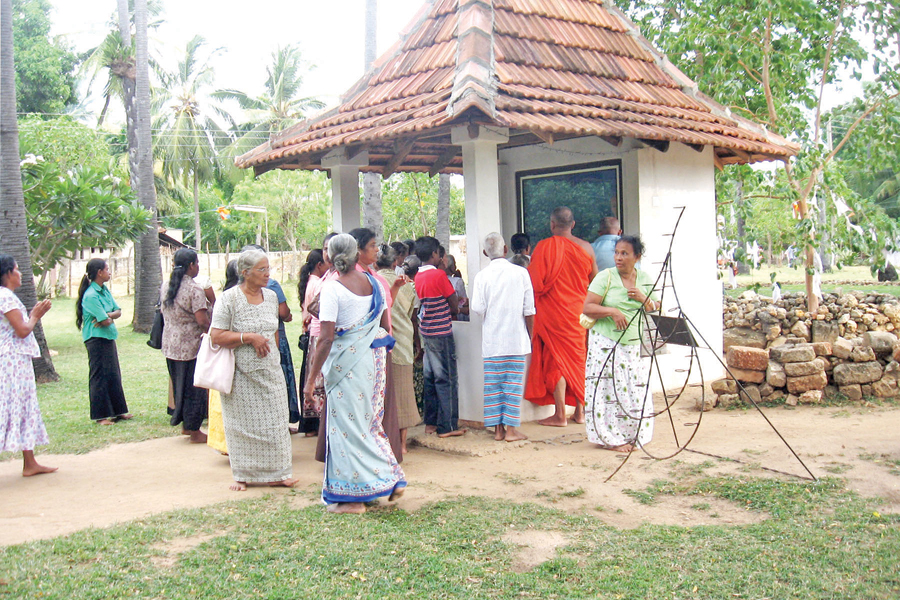
Pilgrims at the small shrine
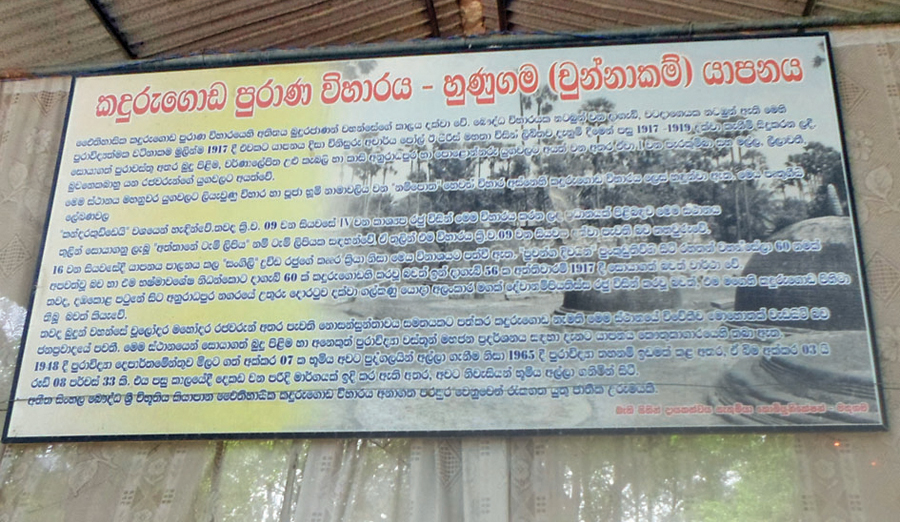
A board that describes the place
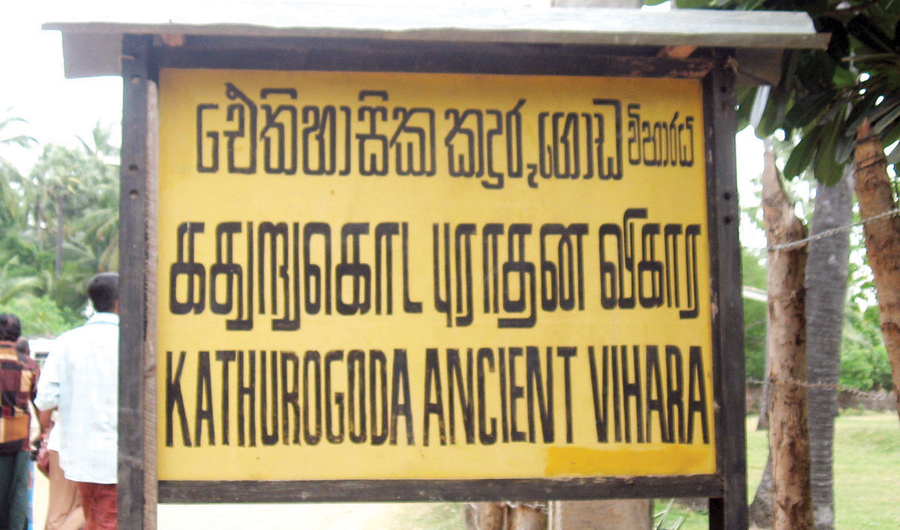
The nameboard
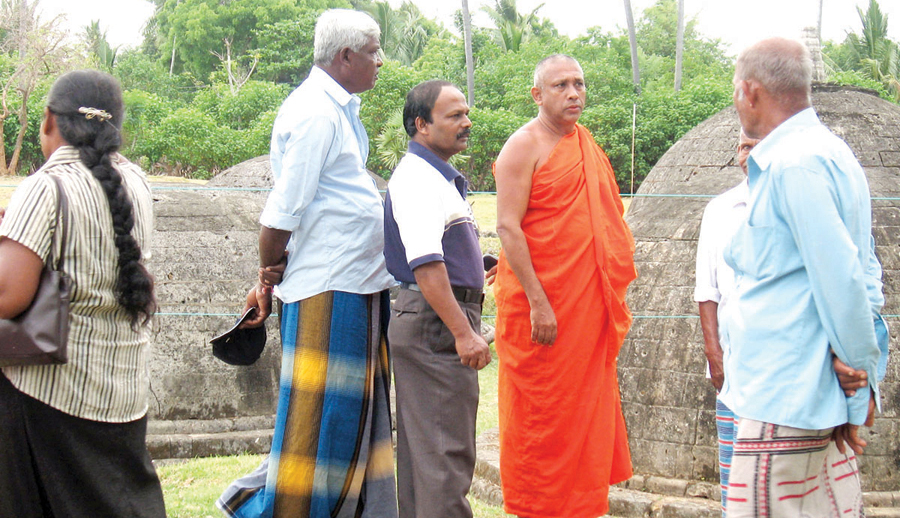
A bhikkhu who had visited the site explaining about the place to pilgrims
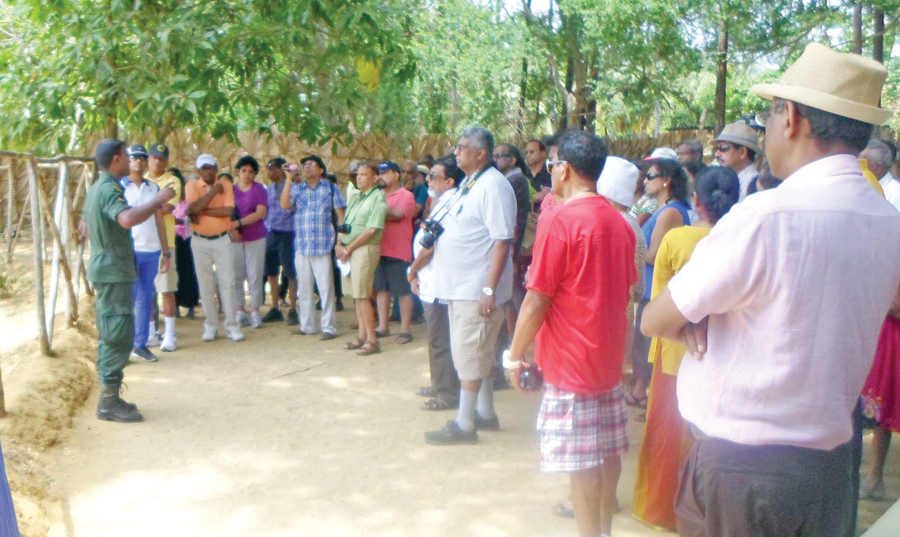
An Army officer explaining about the place to pilgrims
